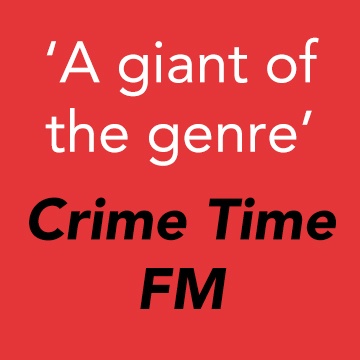 Written by William Shaw — We are back in 1960s London as DS Cathal Breen and his team investigate the murder of a prostitute. Her name was Lena Bobienski and she was Polish, her parents returning home after the World War II where they were presumed to have died in one of Stalin’s gulags. Her working name was ‘Julie Teenager’ and she used her youthful appearance to cater for men whose tastes strayed in that direction. Unfortunately it’s been a few days since she died and the rats arrived early; it’s not a pleasant scene.
Written by William Shaw — We are back in 1960s London as DS Cathal Breen and his team investigate the murder of a prostitute. Her name was Lena Bobienski and she was Polish, her parents returning home after the World War II where they were presumed to have died in one of Stalin’s gulags. Her working name was ‘Julie Teenager’ and she used her youthful appearance to cater for men whose tastes strayed in that direction. Unfortunately it’s been a few days since she died and the rats arrived early; it’s not a pleasant scene.
Breen and his young idealistic constable, Mint, work their way through Julie’s list of clients presuming, quite naturally, that one of them is responsible for her murder. They soon fear that one of her clients was a policeman. It becomes apparent that this case reaches further as protective mechanisms kick into place that obscure the investigation. As the story develops a mysterious Russian emerges and the intelligence services are muddying the waters.
The book opens with a vignette of Rolling Stone Brian Jones and his death in a swimming pool. Breen is living with his pregnant girlfriend Helen Tozer and when the the idea of a conspiracy around Jones’ death is mooted Helen’s ex-copper instincts kick in. She is frustrated at many levels as she copes with her pregnancy in a hot summer. Life without police work and the pervasive sexism of society needle her. She soon develops an increasing interest in Jones’ demise and pursues her own unofficial investigation.
Helen and Breen have an ongoing though evidently uneasy relationship. This is the fourth book in the series and as I haven’t read the first three there is no apparent explanation for this. A few hints are dropped but throughout the novel the Breen-Tozer tension remains an intriguing mystery. Contrary to expectations this is more of a pleasure than a frustration. Few authors have the cojones to leave any aspect of the story partly untold. Shaw resists the temptation to fix it with an exposition dump and we are quite capable of filling the gaps. It enhances the story as a standalone. It is clear that Breen cares deeply for Helen and would like the relationship to develop further. It is enough for this tale.
William Shaw does a fine job of evoking the sense of late 60s London with bohemian lifestyles, increasing use of recreational drugs, and the general spirit of the times. There is a mild degree of improbability in the way the two main plot threads weave together around Breen and Tozer but the storytelling is deftly handled by Shaw. The dialogue is crisp and readable with each character’s voice vivid and distinct. Period touches are dabbed in with admirable attention to detail and go beyond the all-pervasive smoking and wearing of nylon we might expect in the 60s. Descriptions are spare but effective and the main characters are engaging.
What about the title Sympathy for the Devil? It is the opening track on the Rolling Stones’ 1968 Beggars Banquet album. Its samba-rock beat would have thumped out in the clubs of London as Breen searched for the killer. The weaving in of the conspiracy theory with Brian Jones is signalled early in this novel. There are no startling twists and there are no clever plot devices but Shaw does bring all the elements together with great aplomb. That could be a criticism as little is left unexplained but there is enough ambiguity in the finale to add depth and satisfaction. This is fine storytelling from Shaw.
For more crime fiction set in this period, click here.
Riverrun
Print/Kindle/iBook
£9.09
CFL Rating: 4 Stars










